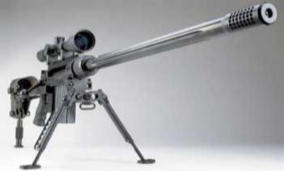

 The Accurate Reloading Forums
The Accurate Reloading Forums  THE ACCURATE RELOADING.COM FORUMS
THE ACCURATE RELOADING.COM FORUMS  Rifles
Rifles  50 Caliber BMG Forum
50 Caliber BMG Forum  WW2 Tracer point of aim?
WW2 Tracer point of aim?Go  | New  | Find  | Notify  | Tools  | Reply  |  |
| One of Us |
Hi guys I was just idly wondering over Christmas (as you do) what was the difference in point of impact between the tracer rounds (every fifth round) and the regular FMJs. Let's assume that the range from his B-17E turret would have been about 300 yards. I'm sure that one of you will know.... HB | ||
|
| One of Us |
Tracers hit slightly higher than the other rounds in the belt (the mix was 4 API to 1 APIT); but at 300 yards there is no difference. Tracer burnout is 900 Meters. Fired many thousands of 50 cal rounds from tanks as it is the TC weapon. M85 on the M60A1 and A3s I was on, and then the M2 on Abrams. Never one from an airplane though. Yes the combat ranges in WW2 were crazy close when we consider that now, a missile can hit you from many miles away. | |||
|
| One of Us |
the thought was that the tracers would hold the air high by a bit allowing the main round to fall on target - after while theyi found that the gunner would aim by the tracer flight and the main rounds would end up missing thus ending the 1per5 tracer sequence | |||
|
| One of Us |
We were trained to put the tracers just over the target and the good stuff would hit it, which it did. Tracers fly higher because they get lighter as they travel. For aircraft, both fixed and rotary wing, we were trained to shoot so many football fields in front of the plane, the details of which I forgot since we never actually did it. We did shoot moving ground targets. Tank Commanders usually shoot by watching the tracers; the sight reticle is ignored. I did it both ways. | |||
|
| Powered by Social Strata |
| Please Wait. Your request is being processed... |
|
 The Accurate Reloading Forums
The Accurate Reloading Forums  THE ACCURATE RELOADING.COM FORUMS
THE ACCURATE RELOADING.COM FORUMS  Rifles
Rifles  50 Caliber BMG Forum
50 Caliber BMG Forum  WW2 Tracer point of aim?
WW2 Tracer point of aim?

Visit our on-line store for AR Memorabilia

